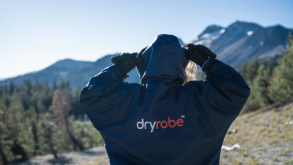In India, the Trade Marks Act 1999 and the rules thereunder guide the process of registration and enforcement of rights relating to trademarks. The Indian regime affords protection to registered as well as unregistered marks. In case of misuse of a registered mark, the right holder can initiate an infringement action against the violating party. For misuse of unregistered marks, the right holder is entitled to claim protection under the law of passing off. In order to succeed in an action for passing off, the plaintiff must meet these three criteria: (1) established goodwill or reputation of the plaintiff attached to the relevant goods or services under its mark, (2) misrepresentation by the defendant which is likely to deceive the public into believing that the defendant's goods/services emanate from the plaintiff and (3) damage suffered or likely to be suffered by the plaintiff.
It is important to remember that the Indian regime affords high importance to prior use. Therefore, an infringement action on the basis of a prior registered mark by a registered proprietor may not succeed against a prior user. Trans-border reputation also holds huge weight, but a party relying on trans-border reputation must be able to prove the acquisition of this reputation in India before the date of adoption and use of the relevant mark by the other party in India.
Even though remedies have been provided to owners of unregistered marks, it is still always advisable to register a mark because in actions based on registered marks, the onus of disproving infringement lies with the defendant. On the contrary, when an action is initiated on the basis of unregistered marks, the plaintiff has to discharge a heavy burden of meeting the threefold criteria of passing off as mentioned above.
Prosecution
Procedure
Searches
Searches can be carried out for identical/similar word/device marks at the online portal of the Trademarks Registry.
Examination
A trademark application can be filed physically or through the e-portal. Once filed, it first undergoes scrutiny for procedural formalities. If it fails this formality check phase, an office action is issued and a reply to this must be filed/executed within 30 days from the date of its receipt. After completion of the formality check phase, the application undergoes substantial examination. If objections are raised by the Trade Marks Office (TMO), a response must be filed within one month from the date of receipt of the examination report. After reviewing the response, if the examiner continues to maintain the objection(s), a hearing is scheduled. In the alternative, if the examiner is satisfied with the response, the mark is advertised as accepted in the Trade Marks Journal.
Opposition
Once a mark is advertised, third parties have a period of four months (non-extendable) from the date of such advertisement of the mark to file a Notice of Opposition. Once the Notice of Opposition is filed, the applicant is required to file its counterstatement within two months (non-extendable) from the date of official service of the Notice of Opposition. Once the counterstatement is filed by the applicant, the opponent is required to file its Evidence in Support of Opposition within two months (non-extendable) from the date of official service of such counterstatement. Alternatively, he may intimate to the registrar that he does not wish to adduce any evidence at this stage and may rely on the contents of his Notice of Opposition. Thereafter, the applicant is required to file its Evidence in support of Application within two months (non-extendable) from the receipt of the Evidence in support of Opposition or the intimation that the opponent does not wish to adduce any evidence. Alternatively, the applicant may intimate to the registrar that he does not wish to adduce any evidence and may rely on the contents of his counterstatement. Subsequent to the service of the Evidence in Support of Application to the opponent or the intimation that the applicant does not wish to adduce any evidence, the opponent may file its Evidence in Reply within one month (non-extendable) of such service. Upon completion of the evidence stage, the registrar issues notice of hearing to both the parties and decides the matter on merits.
Registration
If no opposition is filed by any third party within four months from the date of publication, the mark smoothly sails towards registration.
Rectification/cancellation
A registration can be cancelled on grounds that it was wrongly granted and/or it remains on register contrary to law. It can also be cancelled on the ground of continuous non-use for five years from the date of its registration.
Ownership changes and right transfers
Assignment
Both registered and unregistered marks can be assigned. Assignment can be made either in respect of all or part of the goods and services for which the mark is registered.
Licence
The application for recording of a licence/registration of a registered user must be filed within six months from the date of signing of the licence agreement.
Change of name and address
Change of name and address applications should be filed at the Trademarks Registry to keep the records in order.
Renewal
A mark is valid for a time period of 10 years from the application date and needs to be renewed every 10 years thereafter.
Information/documents required
Application filing
1) Exact representation of the mark.
2) Name, address and legal status of the applicant.
3) Details of goods/services.
4) A simply signed power of attorney (PoA) of the applicant. No notarisation or legalisation is required.
5) Priority details and a certified copy of the priority document along with its certified English translation, in case of a priority claim.
6) In case of user claim – date, month and year of first use along with evidence to corroborate the same. A user affidavit supported with evidence is a mandatory requirement. If no use claim is made, the applications may be filed on a 'proposed to be used' basis.
Assignment
1) Original signed or notarised Deed of Assignment
2) Original signed and notarised Affidavit of No Legal Proceedings stating that there are no legal proceedings pending in respect of the trademarks and assignment
3) A simply signed PoA of the assignee.
Licence
1) An original or notarised copy of the executed licence agreement.
2) A notarised affidavit from the licensor (registered proprietor/owner) or his/her duly authorised representative stating the following:
(a) the particulars of the relationship (as existing or proposed) between the registered proprietor and the proposed registered user including particulars showing the degree of control by the proprietor over the permitted use and as to whether the proposed registered user is the sole registered user or if there are any other restrictions on the number of persons to be applied as registered users;
(b) the exact specification of the goods and/or services in respect of which the licensee is to be registered as the registered user;
(c) the conditions or restrictions (if any) with respect to the characteristics of the goods /services, the mode or place of permitted use or any other matter;
(d) the exact duration of the permitted use or whether it is to exist without any limit of period.
3) A simply signed PoA of the licensor and licensee.
Change of name
1) Any document evidencing change of name (for example, certified copy of an extract from the Commercial Register).
2) A simply signed PoA with the new name of the proprietor.
Change of address
1) Any document evidencing the change of address (for example, certified copy of an extract from the Commercial Register).
2) Date on which the address was changed in DD/MM/YYYY format (only in registered matters).
3) A simply signed PoA with the new address of the proprietor
Renewal
1) A simply signed PoA of the proprietor.
Enforcement
Anti-counterfeiting
Anti-counterfeiting is a major aspect of enforcement of trademark rights of proprietors and right holders, and the term "counterfeiting" is also defined in Section 28 of the Indian Penal Code (IPC) as essentially meaning an act which causes one thing to resemble another thing, intending by means of that resemblance to practise deception, or knowing it to be that deception will thereby be practised. Further, it is not essential for counterfeiting that the imitation should be exact. Moreover, Section 415 of the IPC read with illustration (b) makes the act of counterfeiting into an act of cheating which can either entail imprisonment that may extend to one year, or a fine, or both. Since the sale of counterfeit goods is intended to make illegal profits by defrauding customers and other members of the trade and the public, the courts in India consider such acts as an offence of cheating and dishonestly inducing delivery of property under Section 420 of the IPC, which is punishable with imprisonment of seven years along with a fine.
Sections 102, 103 and 104 of the Trademarks Act also define offences, penalties and procedures in relation to falsification and falsely applying trademarks. These provisions include the offence of counterfeiting and provide for imprisonment for a term not under six months which may extend up to three years and a fine not less than INR 50,000/(USD 742) but which could be enhanced to INR 200,000 (USD 2,966). The term of imprisonment and a fine can be further increased on second and subsequent convictions. The offences defined under the Trade Marks Act are recognisable offences allowing a police officer of a designated rank to make or cause an arrest of the offenders without warrant and to start an investigation with or without the permission of a court. However, prior to taking any action under the Trade Marks Act, police officers are required to seek an opinion from the registrar of trademarks on the facts of the case.
Border control
The government of India has enabled IP owners to enforce their IP rights at Indian borders under the Intellectual Property Rights (Imported Goods) Enforcement Rules, 2007. For this, it is mandatory to have a validly registered trademark/IP right in place. The period of protection available under customs is five years from the recordation of rights with the customs authorities or upon expiry of the validity of registration of the mark/IP right, whichever is earlier. After the expiry of five years, the right holder is required to furnish a fresh notice.
Infringement/passing off
Under the Trade Marks Act, a civil action for infringement of a registered trademark can be filed by the registered proprietor or the registered user of the trademark in India before a district court having jurisdiction to try the suit. In cases where the infringement occurs in the metropolitan areas of Delhi, Mumbai, Chennai and Kolkata, the suit can also be filed before the concerned High Court in those cities. A civil suit against the infringer may also be initiated alongside criminal action for effective deterrence since the import/sale of counterfeit goods also amounts to infringement. Further, in cases of trademark infringement and passing off involving an artistic work as the subject matter, it is useful for the right holder to plead infringement of his/her copyright in such artwork thus invoking the enforceable provisions of copyright law as well. The remedies provided under a civil suit include preliminary and permanent injunction, account of profits or damages, delivery-up of the infringing labels/marks for destruction or erasure, etc. In appropriate cases, the Courts in India have not hesitated from awarding punitive or exemplary damages to the right holder for effective deterrence even amounting to 10 million rupees (USD 146,920). The court entertaining a civil suit is also empowered to appoint a commissioner or commissioners to visit the business premises of the defendant without notice, to inspect the premises and make an inventory of the counterfeit goods for their safe custody by the defendant as court property. This means that once recorded by the commissioner, the defendant cannot deal with or sell those goods to any third party without obtaining prior permission from the concerned civil court. In case the counterfeited mark is not registered in India, a civil action for passing off can be initiated under Section 27(2) read with Sections 134 & 135 of the act if the mark carries substantial goodwill/reputation in the relevant market. The remedies available under a passing off action are the same as in the case of an action for infringement.
インドの商標権制度の概要
インドでは、1999年商標法(以下、「商標法」という)、及びそれに基づく規則が、商標に関連する権利の登録と執行のプロセスの指針となっている。インド当局は、登録及び未登録の商標を保護している。登録商標の不正使用の場合には、権利保持者が、違反者に対する権利侵害訴訟を行うことができる。未登録の商標の不正使用の場合には、権利保持者はパッシング・オフ法に基づき、保護を要求できる。パッシング・オフを請求する訴訟で勝つためには、原告は次の3つの基準を満たす必要がある:(1)原告が商標の下で物品又はサービスを扱うことに対し評判と信用が確立されている、(2)被告の物品/サービスが原告が提供するものであると思われる可能性がある被告による偽りの行為が存在する、及び(3)原告が受ける損害又は損害の可能性が存在する。
重要なことは、インド当局は、先使用を重視するということである。したがって、正式な所有権者が先に登録した商標に対して権利侵害訴訟を起こしても以前からの使用者に対しては成功しない可能性がある。国際的な評判も極めて重要であるが、国際的な評判を主張する当事者は、相手方当事者が、インドにおいて当該商標を採用し、使用した日以前に、インドでその評判を獲得した事実を証明する必要がある。
たとえ、救済措置が未登録商標の所有者に対し行われていたとしても、登録商標に基づいた訴訟の場合、被告は侵害を論駁する責任が課されるため、必ず商標を登録することが望ましい。それどころか、未登録商標に基づいて訴訟が行われる場合、原告は上述のパッシング・オフに関する3つの基準を満たしていることを証明するという重大な責務を免責される。
1. 起訴
手順
調査
商標登録のオンライン・ポータルで同一/類似した単語/商標図案の調査を行なうことができる。
検査
商標申請は、物理的手段又はe-ポータルを通じて提出できる。出願後、最初に手続き上の調査が行われる。この調査で不備があった場合、拒絶通知書が発行され、その受取の日付から30日以内に同通知に対する回答を提出、もしくは遵守を表明する。手続き上の調査完了後、正式な審査が行われる。Trade Marks Office(TMO)によって異議が申し立てられた場合、審査報告の受理日から1か月以内に回答を提出する。回答をレビューした後に、審査官が反対を維持した場合、公聴会が予定される。また審査官が回答を承諾した場合、商標は、受理され、Trade Marks Journal(商標ジャーナル)で公示される。
異議
商標が公示された後、第三者は、商標の公示日から4か月間(延長不可)、異議の通知を提出できる。異議の通知が提出されれば、出願者は、異議の通知が送達された日付から2か月以内(延長不可)にこれに反論する必要がある。出願者による反論後、相手方は反論の通知が送達された日付から2か月以内(延長不可)に異議を裏付ける証拠を提出しなければならない。又は、この段階で証拠を引用せず、異議の通知の内容のみ主張することもできる。その後、出願者は相手方の証拠提出、又は証拠不提出通知の受領から2か月以内(延長不可)に出願を裏付ける証拠を提出しなければならない。または、証拠を引用せず、反論の通知の内容のみ主張することもできる。相手方に対する出願を裏付ける証拠、又は証拠不提出の通知の送達後、相手方はその通知から1か月以内(延長付加)に答弁書で証拠を提出することができる。証拠提示の段階が終了後、登録官は両当事者にヒアリングの通知を発行し、本案の判決を行う。
登録
公示から4か月以内に、いかなる第三者にも異議がない場合、商標の登録が行われる。
修正/取り消し
登録は、それが誤って認められた場合、及び/又は法律に違反している場合、取り消すことができる。また、登録の日付から5年間一度も使用されていないことを理由に取り消すこともできる。
所有権の変更及び権利譲渡
譲渡
登録及び未登録商標は譲渡することができる。商標の譲渡は、その商標が登録時に対象となった物品・サービスのすべて、又は一部のいずれかに関して行うことができる。
使用許諾
登録ユーザーの使用許諾/登録の記録の申請は、使用許諾契約の署名日から6か月以内に提出する。
名義及び住所変更
登録記録の整理を行う商標登録局に名義変更と住所変更の申請をする。
更新
商標は、申請日から10年有効で、その後10年ごとに更新する必要がある。
必要な情報/書類
出願:
1. 商標の厳密な表示
2. 出願者の名前、住所及び法的地位
3. 物品/サービスの詳細
4. 出願者の署名のある委任状(PoA)(公証及び公認は必要ない)
5. 優先権を主張する場合、優先権の詳細及び優先権証明書とその翻訳証明書付英訳
6. ユーザーの主張をする場合:最初に使用した時の年月日、及びこれを裏付ける証拠(証拠による裏付けのあるーザー宣誓供述書は必須であるが、使用の主張をしない場合、「使用意図」に基づいて出願することができる)
譲渡:
1. 署名又は公証人の署名のある譲渡証原本
2. 商標と譲渡における懸案中の訴訟がないことを表明する署名及び公証人の署名のある宣誓供述書原本
3. 譲渡人の署名のあるPoA
使用許諾:
1. 締結されたライセンス契約の原本又は公証人の署名のあるコピー
2. ライセンサー(正式な所有権者/所有者)、又は正式に権限が与えられた代理人が提出する公証人の署名済み宣誓供述書であり、以下を表明するもの:
(a)正式な所有権者によって許可された使用がどの程度管理されるかを示す詳細を含めた正式な所有権者と登録ユーザー予定者との関係(既存の関係又は予定されている関係)の詳細、及び登録ユーザー予定者が単独の登録ユーザーであるかについて、又は登録ユーザーとして申請されるユーザーの人数について他の制限があるかについて
(b)ライセンシーが登録ユーザーとして登録される際に、その登録の対象となる物品、及び/又はサービスの厳密な仕様
(c)物品、及び/又はサービスの特性について条件又は制限(ある場合)、許可された使用方法又は場所、及びその他あらゆる事項
(d)許可された使用の厳密な期間、又は期間無制限かについての情報
3. ライセンサーとライセンシーの署名のあるPoA
名義変更:
1. 名義変更を証明する任意の証明書(例:登記簿謄本の認証コピー)
2. 権利所有者の新名称が記載された署名済みPoA
住所の変更:
1. 住所の変更を証明する任意の証明書(例: 登記簿謄本の認証コピー)
2. DD/MM/YYYYフォーマット(登録済みの場合のみ)で住所変更された日付
3. 所有権者の新住所が記載された署名済みPoA
更新:
1. 所有権者の署名のあるPoA
2. 執行
偽造防止
偽造防止は、所有権者及び権利保持者の商標権の執行の主要な側面の一つである。「偽造」とは、インドの刑法典(IPC)の第28項でも定義されているが、本来の意味は、類似性を利用して詐欺を実行する意図を持ちながら、又は詐欺が実行されることを知っていながら、一つのものを別のものに似せる行為である。さらに、偽造において、模倣が精巧であることは重要ではない。また、Illustration(図解)と併せて参照するIPC第415項では、(b)詐欺行為は不正行為とみなされ、最長1年の禁固刑、罰金又はその両方が課せられるとしている。偽造品の販売が、顧客及び取引に関わるその他関係者及び一般市民から違法収益をだまし取ることを意図しているため、インドの裁判所は、そのような行為をIPC第420項に基づき、詐欺罪及び財産引き渡しの不正な誘導として認識し、罰金と共に7年の禁固刑を科している。
また、商標法第102、103及び104項では、商標の改ざん及び不正適用に関する違反行為、刑罰及び訴訟手続きが定義されている。これらの規定では、偽造罪について、6か月以上3年以内の禁固刑及び50,000インドルピー(742米ドル)以上、200,000インドルピー(2966米ドル)までの罰金を科すとしている。再犯及び累犯では、さらに長期の刑期とより高額な罰金が科せられる。商標法で定義されている違反行為は裁判権内の犯罪であり、特定の地位にある警察官は、犯罪者を令状なしで逮捕することができ、また裁判所の許可の有無に関わらず捜査を開始することができる。しかしながら、商標法に基づき行われるいかなる行為についても、警察官は、事前にその事件の事実に関し、商標の登録官に意見を求めなくてはならない。
国境管理
インド政府は、Intellectual Property Rights (Imported Goods) Enforcement Rules, 2007 (2007年知的所有権(輸入品)執行に関する規定)に基づき、知財所有者がインド国境で自身の知財権を執行することができるとしている。そのためには、商標/知財権の登録を有効にしていることが必須である。税関で受けられる保護期間は、税関で権利が記録されてから5年、又は商標/知財権の効力満了時のどちらか早いほうとなる。5年の満了後、 権利保持者は、新たに通知を提出しなければならない。
権利侵害/パッシング・オフ
商標法に基づき、インド国内の登録商標の正式な所有権者又は登録ユーザーは、司法権を持つ地方裁判所に登録商標の権利侵害について民事訴訟の提訴をすることができる。デリー、ムンバイ、チェンナイ及びコルカタの大都市圏で生じる権利侵害に関する訴訟では、それらの都市の当該高等裁判所に提訴することも可能である。偽造物品の輸入/販売も権利侵害となるため、効果的な差し止めを求める刑事訴訟と合わせて民事訴訟を権利侵害者に対し起こすことができる。さらに、芸術作品が主題として含まれる商標権侵害及びパッシング・オフの訴訟では、権利保持者による当該芸術品の著作権侵害の申し立ては、著作権法の執行可能な規定を発動することになるので、有益である。民事訴訟下で提供される救済には、暫定的・恒久的差止命令、不当収益弁済金又は賠償金、侵害しているラベル/商標の破棄又は抹消などをするための押収が含まれる。適切な訴訟では、インドの裁判所は、有効な差し止めのために、正式な権利保持者に対し1000万ルピー( 146,920米ドル)の懲罰的損害賠償金の支払いを裁定することに躊躇しない。民事訴訟を受け入れている裁判所は、委員を1名又は複数名任命し、被告の事業所を抜き打ちで立ち入り検査させ、法廷財産として被告による保護預かりとするために偽造物品の一覧を作成させることができる。これが意味することは、委員によって物品が記録されたら、被告は、その物品を当該民事裁判所からの許可を得ることなく、いかなる第三者に対してであろうと取引又は販売することができないということである。偽造されている商標がインドで登録されていない場合、かつ、商標が関連する市場において十分な信用と評判を有する場合、商標法の第27(2)項、第134 項及び第135項に基づいてパッシング・オフに関する民事訴訟を起こすことができる。パッシング・オフの訴訟で提供される救済は権利侵害の訴訟と同一である。
以上
Omesh Puri パートナー |
||

|
|
Omesh Puri is a partner with LexOrbis and heads the trademark, design and copyright practice of the firm with over 11 years' experience. He has undertaken a wide array of assignments in prosecution and enforcement of intellectual property rights and regularly advises on complex commercial and IP transactions and has noteworthy experience in representing clients before the Intellectual Property Appellate Board and IP offices. His current focus, along with IP prosecution and contentious matters, is providing advisory services to the technology and media and entertainment sectors including on transactional aspects. He is responsible for large IP portfolios from various industries including pharmaceuticals, foods and beverages, computer software, fashion, automobiles, liquor etc. He has authored several articles and has spoken on various IP issues at national and global conferences. Omesh Puri はLexOrbisのアソシエイト・パートナーで、11年を超える経験を有し、同社の商標、意匠、および著作権に関する業務の主任担当者です。Puriは、知的財産権の出願手続きと法的執行に関する幅広い業務経験があり、複雑な商取引や知財取引について定期的に助言を行い、また特筆すべき経験として、the Intellectual Property Appellate Board(知的財産控訴委員会)および各知財関連機関に対しクライアントの代理を務めたことがあります。現在は、知財の出願手続きおよび紛争に関する案件に加え、テクノロジー、メディアおよびエンターテインメントの分野において、取引面での助言を含めた顧問業務を行うことに注力しています。 Puriは、医薬品、食品・飲料、コンピューター・ソフトウェア、アパレル、自動車、酒類などの様々な業界から依頼された大型知財ポートフォリオを扱っています。また、いくつか著書があり、多様な知財問題について国内外の会議で講演してきました。 |
Amaya Singh パートナー |
||

|
|
Amaya is a partner and heads the overall operations of the firm. With over 15 years of experience in trademarks, she has acquired expertise in all areas of trademark law, including national and international filings, prosecution, assignments, recordals, renewals, oppositions and cancellation actions. She regularly advises clients on allied areas of trademark enforcement, such as brand protection and domain name acquisition. Amaya is also in charge of the Group for Research, Publications and Programs at LexOrbis. Amaya Singhはパートナーとして、事務所全体の運営に携わっています。商標業務で15年以上の経験を有し、国内外の申請書出願から、出願手続き、譲渡、登録、更新、異議申し立て、取消訴訟にいたる商標法のあらゆる分野の専門知識を獲得しています。商標保護及びドメイン名獲得などの商標執行に関連する分野でクライアントに定期的に助言をしています。また、LexOrbisで調査、出版及びプログラム部門を担当しています。 |










